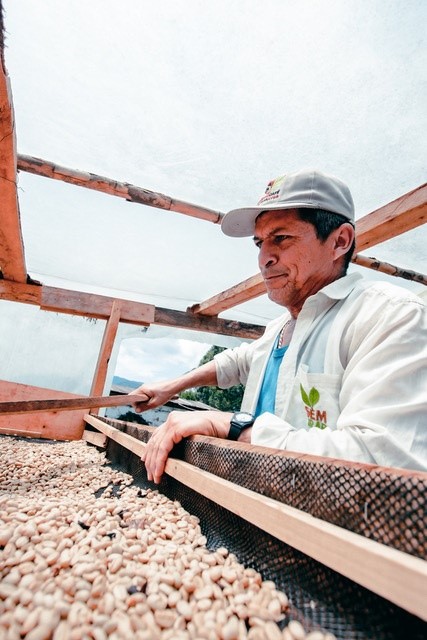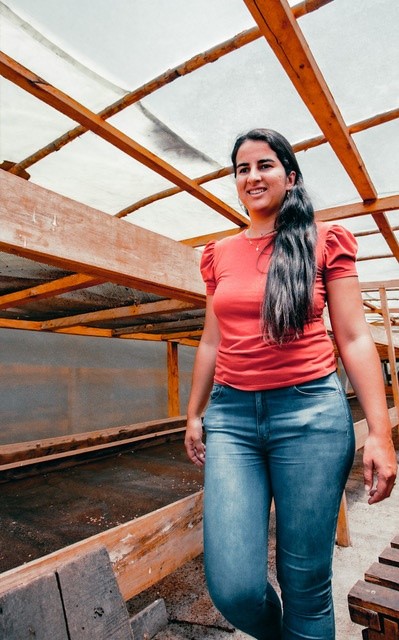Colombia Fincamigos Tabi
The Farm
Located in Jardín, Antioquia, Alejandra Ángel’s Fincamigos farm employs a range of agronomic techniques that ensure high-quality production.
Alejandra’s coffees are renowned for their highly complex taste profiles, attributed in large part to the diverse array of varieties and coffee plantations she has on her farm. Additionally, the use of special nutrients for the coffee trees and meticulous fermentation processes contributes significantly to the distinctive flavour profiles.
Each coffee variety receives unique care and undergoes specific fermentation processes to extract the best qualities from each bean.
THE SUDAN RUMÉ VARIETY
The Sudan Rumé variety was introduced in Colombia around 2012 and from there it was distributed throughout the country. A variety native to Ethiopia, it was initially discovered in 1942 in the Boma Plateau collection in the southeastern region of the country, near the border with Sudan, which inspired its name.
Initially a relatively obscure cultivar, it was crossed with other varieties to increase both quality and disease resistance. The variety gained significant recognition in 2015 when Saša Šestić won the World Barista Championship with a carbonic maceration coffee featuring Sudan Rumé.
Typically, this variety presents notes of stone fruit and sweetness in the cup. It was first planted in Fincamigos in 2017.
Process
The cherries are harvested at their optimum point of ripeness and placed in covered barrels (Anaerobic Fermentation, without air) for 72 hours.
Once this process is complete, the cherries are taken to elevated pallets to complete the Natural process for 20 days. After these days, the cherry, which has become raisins, is stored in sacks to rest and be taken to the threshers for final selection.
Origen
From 1850 onwards, coffee cultivation began to expand from Santander to other regions, particularly Antioquia.
Between 1874 and 1900, this movement gained ground, receiving a key boost in 1893 with the inauguration of the
Antioquia Railroad, which offered efficient transport facilities to the new coffee growers. From 1875 to 1925, Antioquia grew to become the largest producer for exportation. Towards the end of the 1920s, coffee production had grown to represent almost 75% of the country’s total exports. In 1890, Colombia registered exports of approximately 300,000 bags a year, and by the early 1930s, it had grown to more than 3 million. These days, Colombia’s coffee exports reach 12 million bags a year.
Today, Antioquia organises the New Generation Coffee Camp, held in an expansive park on the outskirts of Medellín, Antioquia’s regional capital. This camp brings together young coffee growers (aged 20-30), providing them with the opportunity to improve the quality of their coffees by learning about methods of production, fermentation, and taste. It also aims to build a community by giving them a chance to socialise with other more seasoned coffee producers.
The young farmers learn how to promote their farms by building brand identity and using social media. They study and gain a deeper understanding of the coffee journey after it leaves the farm, exploring the work of exporters, importers, roasters, and more. Hands-on, practical lessons in barista skills are also a feature of the camp.
18,50 € – 74 €
Free shipping from 40€ purchase (Peninsula and Balearic Islands)





